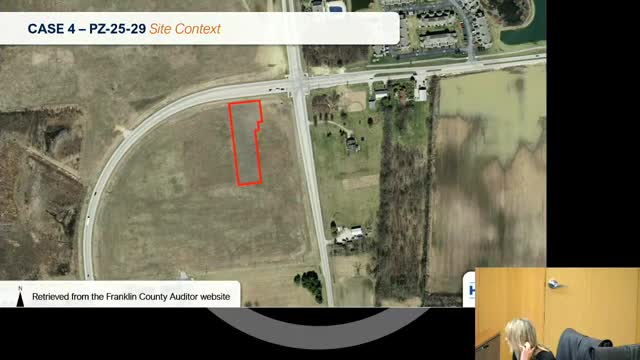Alton Place proposes design changes for Building D to accommodate two tenants
July 11, 2025 | Hilliard, Franklin County, Ohio
Thanks to https://workplace-ai.com/ , all articles about Ohio are free for you to enjoy throughout 2025!

This article was created by AI using a video recording of the meeting. It summarizes the key points discussed, but for full details and context, please refer to the video of the full meeting. Link to Full Meeting
As the discussion unfolded, city officials reviewed the original architectural plans, which featured arched windows and multiple entrances. The proposed changes, however, would replace these with flat windows and fewer entrances, reflecting the reduced number of tenants—two dental practices that will occupy the space. The architect, Carter Bean, emphasized that while the changes might offer some cost savings, they were primarily aimed at enhancing the building's visual appeal. The introduction of fiber cement panels was presented as a way to break up the long brick walls and add color, aligning with the aesthetic of other nearby structures.
Commission members raised concerns about the implications of removing windows and entrances, questioning whether the design would still allow for visibility into the building's interior. The architect clarified that the new layout was driven by the functional needs of the tenants, with exam rooms replacing what were once intended as storefronts. He argued that solid panels would obscure less attractive utility spaces while maintaining the overall character of the building.
The staff report indicated that the proposed modifications were consistent with the approved architectural quality and compatible with the surrounding area. They recommended approval of the changes, contingent on maintaining a high standard of design across all building elevations.
As the meeting progressed, the absence of the applicant prompted further inquiries from commission members, who sought clarity on the long-term adaptability of the building should the tenant situation change in the future. The architect assured them that while the modifications could be reversed, the design aimed to create a cohesive and intentional look that would enhance the building's presence in the community.
With the discussion wrapping up, the commission appeared poised to approve the revisions, reflecting a balance between functional needs and architectural integrity. As Hilliard continues to evolve, the decisions made in these meetings will shape the character of its neighborhoods for years to come.
Converted from Planning & Zoning Commission - Jul 10 2025 meeting on July 11, 2025
Link to Full Meeting
Comments
View full meeting
This article is based on a recent meeting—watch the full video and explore the complete transcript for deeper insights into the discussion.
View full meeting
